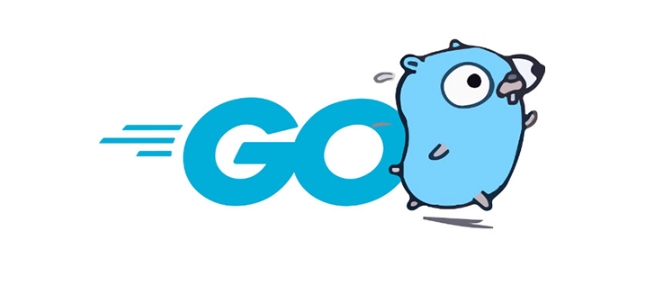A goroutine leak occurs when a goroutine never finishes or gets cleaned up, often due to blocked channel operations or infinite loops. 1. It leads to resource waste and performance issues like memory bloat and slowdowns. 2. Common causes include waiting on unread channels, sending to unreceived channels, and missing exit conditions in loops. 3. Detection methods involve using the Go race detector, runtime.NumGoroutine(), or the net/http/pprof package to monitor active goroutines. 4. Prevention strategies include using context.Context for cancellation, managing buffered channels carefully, avoiding unnecessary infinite loops, and employing timeouts or default cases in select statements. 5. Structured patterns like worker pools and lifecycle-aware third-party libraries also help prevent leaks.

A goroutine leak happens when a goroutine is started but never finishes or gets cleaned up, leading to wasted resources and potential performance issues in your Go program. It's not always obvious when this happens, but it can cause memory bloat and slowdowns over time.

If you're seeing high memory usage or slow response times with no obvious reason, a goroutine leak might be the culprit.
What causes a goroutine leak?
Most goroutine leaks happen because of waiting on channels that never get closed or blocked forever. For example:

- A goroutine waits to receive from a channel that no one ever sends to.
- A goroutine tries to send to a channel that no one receives from.
- A long-running loop inside a goroutine doesn't have a proper exit condition.
This kind of issue isn’t always caught during testing, especially if it only shows up under specific conditions or after running for a while.
Here’s a simple example:

ch := make(chan int)
go func() {
<-ch // This goroutine will wait forever if nothing is sent or the channel isn't closed
}()That goroutine won’t end unless something gets sent to ch or the channel is closed somewhere else — and if neither happens, you've got a leak.
How to detect a goroutine leak
The easiest way to spot a leak is by using the built-in Go race detector or by inspecting the number of active goroutines at runtime.
One practical method is to expose /debug/pprof/goroutine via the net/http/pprof package. Just import it and start an HTTP server:
import _ "net/http/pprof"
go func() {
http.ListenAndServe(":6060", nil)
}()Then visit http://localhost:6060/debug/pprof/goroutine to see how many goroutines are currently active and what they’re doing.
Another option is to use unit tests with runtime.NumGoroutine() to check for unexpected growth in goroutine count after a function runs.
You can also run your app with the -race flag:
go run -race main.go
It won’t catch all leaks, but it can help identify some common ones like blocked sends or receives.
How to prevent and fix goroutine leaks
To avoid leaks, follow these practices:
- Always have a way to cancel or signal goroutines to stop, usually through a
context.Context. - Use buffered channels carefully and make sure someone is receiving from them.
- Avoid infinite loops without exit conditions unless absolutely necessary.
- Use
selectwith adefaultcase or a timeout when polling or waiting.
For example, here’s how you can safely manage a goroutine with context:
ctx, cancel := context.WithCancel(context.Background())
go func(ctx context.Context) {
select {
case <-ctx.Done():
return
}
}(ctx)
// Later when done
cancel()Also, consider wrapping goroutines in higher-level patterns like worker pools or pipelines, where lifecycle management is more structured.
If you're using third-party libraries that spawn goroutines, check their documentation for clean shutdown methods or context support.
Fixing goroutine leaks comes down to careful design and regular monitoring. Once you know what to look for, most leaks are easy to avoid with just a bit of planning.
The above is the detailed content of What is a goroutine leak and how to fix it. For more information, please follow other related articles on the PHP Chinese website!

Hot AI Tools

Undress AI Tool
Undress images for free

Undresser.AI Undress
AI-powered app for creating realistic nude photos

AI Clothes Remover
Online AI tool for removing clothes from photos.

Clothoff.io
AI clothes remover

Video Face Swap
Swap faces in any video effortlessly with our completely free AI face swap tool!

Hot Article

Hot Tools

Notepad++7.3.1
Easy-to-use and free code editor

SublimeText3 Chinese version
Chinese version, very easy to use

Zend Studio 13.0.1
Powerful PHP integrated development environment

Dreamweaver CS6
Visual web development tools

SublimeText3 Mac version
God-level code editing software (SublimeText3)

Hot Topics
 What are the implications of Go's static linking by default?
Jun 19, 2025 am 01:08 AM
What are the implications of Go's static linking by default?
Jun 19, 2025 am 01:08 AM
Go compiles the program into a standalone binary by default, the main reason is static linking. 1. Simpler deployment: no additional installation of dependency libraries, can be run directly across Linux distributions; 2. Larger binary size: Including all dependencies causes file size to increase, but can be optimized through building flags or compression tools; 3. Higher predictability and security: avoid risks brought about by changes in external library versions and enhance stability; 4. Limited operation flexibility: cannot hot update of shared libraries, and recompile and deployment are required to fix dependency vulnerabilities. These features make Go suitable for CLI tools, microservices and other scenarios, but trade-offs are needed in environments where storage is restricted or relies on centralized management.
 How does Go ensure memory safety without manual memory management like in C?
Jun 19, 2025 am 01:11 AM
How does Go ensure memory safety without manual memory management like in C?
Jun 19, 2025 am 01:11 AM
Goensuresmemorysafetywithoutmanualmanagementthroughautomaticgarbagecollection,nopointerarithmetic,safeconcurrency,andruntimechecks.First,Go’sgarbagecollectorautomaticallyreclaimsunusedmemory,preventingleaksanddanglingpointers.Second,itdisallowspointe
 How do I create a buffered channel in Go? (e.g., make(chan int, 10))
Jun 20, 2025 am 01:07 AM
How do I create a buffered channel in Go? (e.g., make(chan int, 10))
Jun 20, 2025 am 01:07 AM
To create a buffer channel in Go, just specify the capacity parameters in the make function. The buffer channel allows the sending operation to temporarily store data when there is no receiver, as long as the specified capacity is not exceeded. For example, ch:=make(chanint,10) creates a buffer channel that can store up to 10 integer values; unlike unbuffered channels, data will not be blocked immediately when sending, but the data will be temporarily stored in the buffer until it is taken away by the receiver; when using it, please note: 1. The capacity setting should be reasonable to avoid memory waste or frequent blocking; 2. The buffer needs to prevent memory problems from being accumulated indefinitely in the buffer; 3. The signal can be passed by the chanstruct{} type to save resources; common scenarios include controlling the number of concurrency, producer-consumer models and differentiation
 How can you use Go for system programming tasks?
Jun 19, 2025 am 01:10 AM
How can you use Go for system programming tasks?
Jun 19, 2025 am 01:10 AM
Go is ideal for system programming because it combines the performance of compiled languages ??such as C with the ease of use and security of modern languages. 1. In terms of file and directory operations, Go's os package supports creation, deletion, renaming and checking whether files and directories exist. Use os.ReadFile to read the entire file in one line of code, which is suitable for writing backup scripts or log processing tools; 2. In terms of process management, the exec.Command function of the os/exec package can execute external commands, capture output, set environment variables, redirect input and output flows, and control process life cycles, which are suitable for automation tools and deployment scripts; 3. In terms of network and concurrency, the net package supports TCP/UDP programming, DNS query and original sets.
 What are functional options patterns in Go, and when are they useful for constructor design?
Jun 14, 2025 am 12:21 AM
What are functional options patterns in Go, and when are they useful for constructor design?
Jun 14, 2025 am 12:21 AM
FunctionaloptionsinGoareadesignpatternusedtocreateflexibleandmaintainableconstructorsforstructswithmanyoptionalparameters.Insteadofusinglongparameterlistsorconstructoroverloads,thispatternpassesfunctionsthatmodifythestruct'sconfiguration.Thefunctions
 How do I call a method on a struct instance in Go?
Jun 24, 2025 pm 03:17 PM
How do I call a method on a struct instance in Go?
Jun 24, 2025 pm 03:17 PM
In Go language, calling a structure method requires first defining the structure and the method that binds the receiver, and accessing it using a point number. After defining the structure Rectangle, the method can be declared through the value receiver or the pointer receiver; 1. Use the value receiver such as func(rRectangle)Area()int and directly call it through rect.Area(); 2. If you need to modify the structure, use the pointer receiver such as func(r*Rectangle)SetWidth(...), and Go will automatically handle the conversion of pointers and values; 3. When embedding the structure, the method of embedded structure will be improved, and it can be called directly through the outer structure; 4. Go does not need to force use getter/setter,
 What are interfaces in Go, and how do I define them?
Jun 22, 2025 pm 03:41 PM
What are interfaces in Go, and how do I define them?
Jun 22, 2025 pm 03:41 PM
In Go, an interface is a type that defines behavior without specifying implementation. An interface consists of method signatures, and any type that implements these methods automatically satisfy the interface. For example, if you define a Speaker interface that contains the Speak() method, all types that implement the method can be considered Speaker. Interfaces are suitable for writing common functions, abstract implementation details, and using mock objects in testing. Defining an interface uses the interface keyword and lists method signatures, without explicitly declaring the type to implement the interface. Common use cases include logs, formatting, abstractions of different databases or services, and notification systems. For example, both Dog and Robot types can implement Speak methods and pass them to the same Anno
 How do I use the io package to work with input and output streams in Go?
Jun 20, 2025 am 11:25 AM
How do I use the io package to work with input and output streams in Go?
Jun 20, 2025 am 11:25 AM
TheGoiopackageprovidesinterfaceslikeReaderandWritertohandleI/Ooperationsuniformlyacrosssources.1.io.Reader'sReadmethodenablesreadingfromvarioussourcessuchasfilesorHTTPresponses.2.io.Writer'sWritemethodfacilitateswritingtodestinationslikestandardoutpu






